LiDAR sensor for drones is a relatively new concept that is becoming popular for quick and efficient 3D mapping and geospatial data capturing. Earlier, these sensors were fitted in helicopters, aircraft, and satellites to map areas on the ground or measure water body depths. However, with drones becoming more versatile in their payload capabilities, aerial LiDAR is now more accessible than ever. This remote sensing technology is quickly replacing RGB cameras in drones to capture unstructured surfaces in high-resolution with better accuracy.
With the availability of innovative, compact LiDAR sensors, more companies can now easily mount a LiDAR system onto drones and can use the device for a range of applications.
Let’s take a look at some of the promising applications of LiDAR-equipped drones.
4 Applications of LiDAR Drones
Search and Rescue
LiDAR sensors are efficient in mapping surfaces, and this capability aids significantly in carrying out search and rescue operations. When installed on drones, these sensors can easily detect humans on any given terrain and aid the rescue workers in locating the position of a missing person quickly. Once the drone locates the individual, rescue teams can plan the best route to bring back the person safely. Since the sensor does not require light to capture data, it becomes easier to carry out rescue operations during the night.
Unlike RGB cameras that are not reliable in capturing data during bad weather, LiDAR sensors like Hokuyo’s UST-30LX come with IP67 protection and multi-echo integration to ensure reliable object detection and environmental mapping in all weather conditions.
LiDAR-equipped drones are also useful in carrying out water rescues that are otherwise often the most difficult. Using Bathymetric LiDAR sensors, drones can quickly map and measure the depth of water bodies. The sensor uses a low-frequency infrared pulse that reflects off the water surface and a high-frequency infrared laser pulse that can penetrate the water surface, reach the ocean bed, and reflect off to measure the depth. As a result, it becomes easier for the rescue workers to quickly locate humans or wreckage partially submerged in the water.
Law Enforcement
While drones are being extensively used today for security and surveillance, LiDAR sensors take this drone capability to a whole new level, aiding law enforcement agencies to assess large areas tactically. Drones with LiDAR sensors enable officials to capture and monitor crime scenes from a safe distance. Since the sensor requires no external light to capture the image, law enforcement agents can fully document the crime scenes even if they happen in the dark and in the wilderness. The recorded data can be reconstructed to understand the timeline of events better and present it as reliable evidence in the court.
LiDAR systems in drones also help law enforcement tackle situations like armed hostage or mass shootings with greater safety. Instead of risking the lives of security personnel, LiDAR sensors mounted on drones provide a complete picture of the situation and help law enforcement in determining all the necessary tools and tactics required to respond to the emergency efficiently and effectively.
Infrastructure/Inspections
LiDAR drones are turning out to be extremely useful in ensuring safety at construction sites when performing structural inspections. LiDAR sensors offer a large field of view and provide accurate distance data with efficient obstacle detection, enabling consultants to perform safe building surveys. Drones also eliminate the need to survey the entire site manually. Inspectors can carry out a full aerial inspection safely from the ground.
When coupled with thermal cameras, LiDAR drones can help identify hotspots in the structure, enabling inspectors to detect the issues early and take necessary measures to prevent failure. Drones with LiDAR systems can also aid in better inspection and maintenance of industrial facilities and power plants.
The high-resolution data from LiDAR allows technicians to detect damages to the power lines or rails, turbines, pipelines, and other industrial equipment quickly and efficiently. With substantial savings in hours and inspection costs, LiDAR drones enable businesses to carry out effective predictive maintenance and save millions by preventing sudden breakdowns and accidents.
Agriculture
LiDAR drones simplify mapping terrain, which makes them ideal for a range of agricultural applications. For example, drones equipped with LiDAR sensors allow monitoring the cattle herds by capturing the grazing area. An alarm system can be incorporated, which would trigger when animals exceed their grazing limit. This way, farmers can ensure that their herds are safe, even if it is dark outside.
Accurate mapping also allows farmers to use precision farming methods that facilitate effective crop monitoring and generate better yields. By capturing soil condition and crop data, such as crop height, volume, and mass, farmers can identify the required level of fertilizers to gain the expected yield.
LiDAR Sensors for Drones Open New Possibilities
The ability to accurately map environments in high resolution irrespective of the weather conditions makes LiDAR sensors one of the most valuable devices for remote sensing. When these sensors integrate with drones, a range of new applications are possible that were once impossible or costly. The examples highlighted here are only a handful of areas where LiDAR drones are making a difference. Soon, this new way of remote sensing will transform many traditional applications and also generate newer ones.
Connect with our team to find out more about how LiDAR sensors can transform your business.

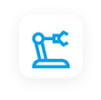 Factory Automation
Factory Automation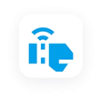 Logistics Automation
Logistics Automation Process Automation
Process Automation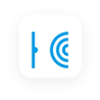 Crane Collision Avoidance
Crane Collision Avoidance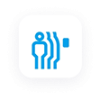 LiDAR/Obstacle Detection
LiDAR/Obstacle Detection Safety Laser Scanners
Safety Laser Scanners Optical Data Transmission
Optical Data Transmission Hot Metal Detectors
Hot Metal Detectors Laser Distance Sensor
Laser Distance Sensor Blog
Blog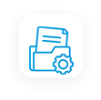 Whitepapers
Whitepapers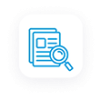 Case Studies
Case Studies Infographics
Infographics